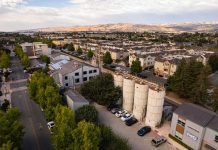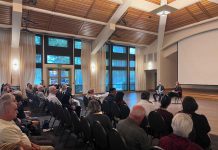Sometimes, a problem can be crystallized in a single, disturbing
image. You’re crawling along in one of those awful, summer traffic
jams. You’re late for something, and the highway is packed
– work traffic, beach traffic, mall traffic, trucks. Suddenly,
in the distance you see an electronic sign, urgently flashing a
message.
By Naveen Lamba
Sometimes, a problem can be crystallized in a single, disturbing image.
You’re crawling along in one of those awful, summer traffic jams. You’re late for something, and the highway is packed – work traffic, beach traffic, mall traffic, trucks. Suddenly, in the distance you see an electronic sign, urgently flashing a message. Inching closer, you grow hopeful that the sign will offer some helpful information – maybe a way out of your dilemma.
But then the words become visible: Expect Delays.
“Are they kidding?” might be one of the milder thoughts flashing through your brain.
Sadly, they’re not kidding. Road signs that proclaim the obvious are just one symptom of the inadequacy of today’s transportation management systems.
The need for something better is urgent. With its start-stop traffic and stomach-churning tie-ups, rush-hour driving in much of the nation has become a daily test of endurance that tries even the hardiest souls. According to a recent study of 439 urban areas from the Texas Transportation Institute, congestion costs $115 billion annually in lost time and wasted gas.
Traffic congestion clearly has a major impact on our personal well-being. And summer seems to be the season of our most virulent discontent. A recent IBM analysis of comments posted by drivers on blogs, Twitter and other social media indicates that driver stress peaks in August as vacation and work traffic jockey for the same asphalt.
But what can be done? We’ve all experienced traffic for so long that we we accept it as the cost of living in an urban environment. We hope that the next construction project – a new lane or road – will get things moving. But common sense – and hard-won experience – indicates that a comprehensive, long-term solution will require something more.
Fortunately, there is reason to be hopeful. With technology, we are now able to understand complex systems that previously resisted investigation; systems as diverse as waterways, oil fields and transportation networks. Forward-thinking transportation officials around the world are undertaking important projects to address the traffic beast by using roadways more intelligently.
In one California pilot, for example, commuters can sign up to receive customized traffic reports via text messages or email before they begin their trip. Not the current traffic information, but traffic conditions that will exist up to 20 or 30 minutes later when they are well into their journey.
This way, they can find an alternative course before they even leave their house.
In Singapore, traffic planners receive data from GPS devices in taxicabs as well as sensors embedded in the roadway. They can analyze the information with sophisticated algorithms to predict traffic jams before they happen and take pre-emptive actions to reduce the impact or duration of the forecasted congested conditions.
Meanwhile, Stockholm has a congestion pricing system where all vehicles entering the central city pay a charge that varies based on the time of day. Since 2007, the system has reduced traffic by 18 percent and cut emissions by between 14 percent and 18 percent. Money collected will be invested in traffic infrastructure. The toll system was a factor in Stockholm being named European Green Capital for 2010.
These projects reflect an acceptance of the undeniable fact that our roadways are a precious commodity and must be treated as such. They reflect the realization that congestion on any stretch of road is driven by events both near and far – events that are constantly unfolding.
For years, the transportation problem has seemed insoluble – we repair infrastructure endlessly, yet the traffic gets worse.
But today, by using the wealth of data available and using advanced analytical and communication technologies, it is possible to make much more intelligent use of our transportation resources. By providing timely and actionable information to travelers, we can fundamentally alter the dynamics of getting people from point A to point B.
The stakes are high. But if we can move beyond the old way of doing things and prepare our transportation network for the 21st century, we will improve our quality of life and lay the groundwork for a new era of economic growth.
Naveen Lamba is leader of IBM’s Intelligent Transportation practice. Email: at na**********@****bm.com.







